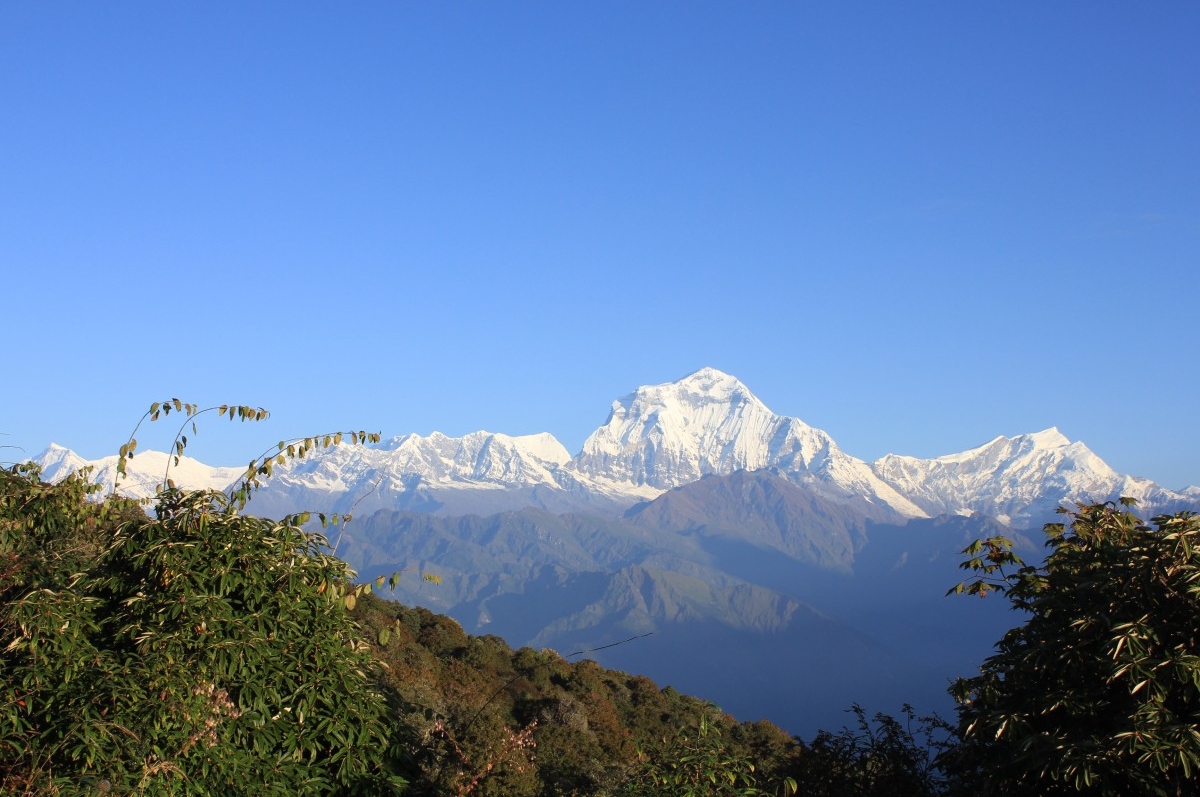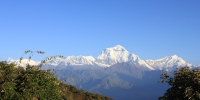
[{"name":"Everest Base Camp Trek","duration":"12","image_url":"https:\/\/www.asianatrek.com\/storage\/trip-galleries\/1\/thumb_df4c6c45eb7739725e2a027731272d2b.webp","offer_price":1377,"url":"https:\/\/www.asianatrek.com\/trips\/everest-base-camp-trek"},{"name":"Everest Base Camp Chola Pass Trek via Gokyo Ri","duration":"18","image_url":"https:\/\/www.asianatrek.com\/storage\/trip-galleries\/2\/thumb_daf27447ae7b85ac58808a07f9d385fa.webp","offer_price":1535,"url":"https:\/\/www.asianatrek.com\/trips\/everest-base-camp-chola-pass-trek-via-gokyo-ri"},{"name":"Pikey Peak Trekking","duration":"11","image_url":"https:\/\/www.asianatrek.com\/storage\/trip-galleries\/3\/thumb_0df4483c060e34fb38365f547d15e426.jpeg","offer_price":null,"url":"https:\/\/www.asianatrek.com\/trips\/pikey-peak-trekking"},{"name":"Everest Base Camp Trekking via Jiri","duration":"21","image_url":"https:\/\/www.asianatrek.com\/storage\/trip-galleries\/4\/thumb_6480a63470248802cd4887687d4f2cb9.jpeg","offer_price":null,"url":"https:\/\/www.asianatrek.com\/trips\/everest-base-camp-trekking-via-jiri"},{"name":"Everest panorama Trekking","duration":"7","image_url":"https:\/\/www.asianatrek.com\/storage\/trip-galleries\/5\/thumb_cfc939d63ab39915e2e49495165d8d1a.jpeg","offer_price":null,"url":"https:\/\/www.asianatrek.com\/trips\/everest-panorama-trekking"},{"name":"Everest Base Camp Heli Tour","duration":"1","image_url":"https:\/\/www.asianatrek.com\/storage\/trip-galleries\/6\/thumb_98b5486a69e5c0bc6c81931c683cc13e.jpg","offer_price":null,"url":"https:\/\/www.asianatrek.com\/trips\/everest-base-camp-heli-tour"},{"name":"Mera Peak Climbing","duration":"18","image_url":"https:\/\/www.asianatrek.com\/storage\/trip-galleries\/7\/thumb_51c1edefaa64f5ef7c62c3e6e46bf6e0.jpeg","offer_price":null,"url":"https:\/\/www.asianatrek.com\/trips\/mera-peak-climbing"},{"name":"Makalu Base Camp Trekking","duration":"20","image_url":"https:\/\/www.asianatrek.com\/storage\/trip-galleries\/8\/thumb_e8044d9070cf0c36e5296a4e062946ed.jpg","offer_price":null,"url":"https:\/\/www.asianatrek.com\/trips\/makalu-base-camp-trekking"},{"name":"Pokalde Peak Climbing","duration":"17","image_url":"https:\/\/www.asianatrek.com\/storage\/trip-galleries\/9\/thumb_d68bf695f63bb5d9a92c28b723674a65.jpg","offer_price":null,"url":"https:\/\/www.asianatrek.com\/trips\/pokalde-peak-climbing"},{"name":"Everest Three High Passes Trekking","duration":"20","image_url":"https:\/\/www.asianatrek.com\/storage\/trip-galleries\/10\/thumb_d4b80b7a6a762e91a5ed3209deec697a.jpeg","offer_price":null,"url":"https:\/\/www.asianatrek.com\/trips\/everest-three-high-passes-trekking"},{"name":"Island Peak Climbing","duration":"19","image_url":"https:\/\/www.asianatrek.com\/storage\/trip-galleries\/11\/thumb_373334fbec4d07e56d4e375b1d608ff2.jpeg","offer_price":2125,"url":"https:\/\/www.asianatrek.com\/trips\/island-peak-climbing"},{"name":"Mountain Flight In Nepal","duration":"one hour flight time","image_url":"https:\/\/www.asianatrek.com\/storage\/trip-galleries\/12\/thumb_efdf6879c6d89707ac02a35dc1aeee6f.jpeg","offer_price":null,"url":"https:\/\/www.asianatrek.com\/trips\/mountain-flight-in-nepal"},{"name":"Sky Diving in Nepal","duration":"7","image_url":"https:\/\/www.asianatrek.com\/storage\/trip-galleries\/13\/thumb_f44dc2a4c298d78415b91fde4bc44ef3.jpeg","offer_price":null,"url":"https:\/\/www.asianatrek.com\/trips\/sky-diving-in-nepal"},{"name":"Lobuche Peak Climbing","duration":"16","image_url":"https:\/\/www.asianatrek.com\/storage\/trip-galleries\/14\/thumb_e48d68ff7ba955ef7b1cfd5488f4a98b.jpg","offer_price":null,"url":"https:\/\/www.asianatrek.com\/trips\/lobuche-peak-climbing"},{"name":"Ghorepani Dhampus Circuit Trekking","duration":"9","image_url":"https:\/\/www.asianatrek.com\/storage\/trip-galleries\/15\/thumb_9f7bba80a63f1ee3ac72af9b4c38adbc.jpg","offer_price":null,"url":"https:\/\/www.asianatrek.com\/trips\/ghorepani-dhampus-circuit-trekking"},{"name":"Everest Luxury Trekking","duration":"10","image_url":"https:\/\/www.asianatrek.com\/storage\/trip-galleries\/16\/thumb_d557ecfe521ac22a8da2e7ded6163179.jpeg","offer_price":3507,"url":"https:\/\/www.asianatrek.com\/trips\/everest-luxury-trekking"},{"name":"Everest Dudh Kunda Trekking","duration":"14","image_url":"https:\/\/www.asianatrek.com\/storage\/trip-galleries\/17\/thumb_717e43f4433d98daccef811c4b3088a1.jpg","offer_price":null,"url":"https:\/\/www.asianatrek.com\/trips\/everest-dudh-kunda-trekking"},{"name":"Royal Trekking","duration":"10","image_url":"https:\/\/www.asianatrek.com\/storage\/trip-galleries\/18\/thumb_fc3c15de8f618f94d319311abc393a20.jpg","offer_price":null,"url":"https:\/\/www.asianatrek.com\/trips\/royal-trekking"},{"name":"Rolwaling Trekking","duration":"15","image_url":"https:\/\/www.asianatrek.com\/storage\/trip-galleries\/19\/thumb_a7bab6bc34d0da37605a66606dc03134.jpeg","offer_price":null,"url":"https:\/\/www.asianatrek.com\/trips\/rolwaling-trekking"},{"name":"EBC Trekking return by Heli","duration":"13","image_url":"https:\/\/www.asianatrek.com\/storage\/trip-galleries\/20\/thumb_92249812da03dc25b7151e5104e94237.jpg","offer_price":null,"url":"https:\/\/www.asianatrek.com\/trips\/ebc-trekking-return-by-heli"},{"name":"Sarangkot Lwang Trekking","duration":"9","image_url":"https:\/\/www.asianatrek.com\/storage\/trip-galleries\/21\/thumb_c361083fa0da75df6491226b9c203df6.jpeg","offer_price":null,"url":"https:\/\/www.asianatrek.com\/trips\/sarangkot-lwang-trekking"},{"name":"Gokyo Lake Trek Return By Heli","duration":"11","image_url":"https:\/\/www.asianatrek.com\/storage\/trip-galleries\/22\/thumb_60699c129d5333b08a53428f89c677a5.webp","offer_price":null,"url":"https:\/\/www.asianatrek.com\/trips\/gokyo-lake-trek-return-by-heli"},{"name":"Tiji Festival Trekking","duration":"17","image_url":"https:\/\/www.asianatrek.com\/storage\/trip-galleries\/24\/thumb_407ae9ea7b285f934d123106ef942b28.jpg","offer_price":null,"url":"https:\/\/www.asianatrek.com\/trips\/tiji-festival-trekking"},{"name":"Annapurna Base Camp Trekking","duration":"9","image_url":"https:\/\/www.asianatrek.com\/storage\/trip-galleries\/25\/thumb_45f7fe9d91f48f2902f56075f4afecff.webp","offer_price":615,"url":"https:\/\/www.asianatrek.com\/trips\/annapurna-base-camp-trekking"},{"name":"Jomsom Muktinath Trekking","duration":"13","image_url":"https:\/\/www.asianatrek.com\/storage\/trip-galleries\/26\/thumb_8cf7e3391b0721bfb4fd194c050ecdd5.jpeg","offer_price":null,"url":"https:\/\/www.asianatrek.com\/trips\/jomsom-muktinath-trekking"},{"name":"Pathivara Cultural Trekking","duration":"8","image_url":"https:\/\/www.asianatrek.com\/storage\/trip-galleries\/27\/thumb_766c5affcfb7f41c5f52807064a201ed.jpeg","offer_price":null,"url":"https:\/\/www.asianatrek.com\/trips\/pathivara-cultural-trekking"},{"name":"Kanchenjunga Circuit Trekking","duration":"26","image_url":"https:\/\/www.asianatrek.com\/storage\/trip-galleries\/28\/thumb_927fd26ddfbbc1ab649095a97e06df1f.webp","offer_price":null,"url":"https:\/\/www.asianatrek.com\/trips\/kanchenjunga-circuit-trekking"},{"name":"Annapurna Circuit Trekking","duration":"12","image_url":"https:\/\/www.asianatrek.com\/storage\/trip-galleries\/29\/thumb_363379f0542f10cf6a0fd05482999226.webp","offer_price":811,"url":"https:\/\/www.asianatrek.com\/trips\/annapurna-circuit-trekking"},{"name":"Manaslu Larke Pass Trekking","duration":"11","image_url":"https:\/\/www.asianatrek.com\/storage\/trip-galleries\/30\/thumb_fde78a753d540a9ede4fdca5dbee6ff9.webp","offer_price":985,"url":"https:\/\/www.asianatrek.com\/trips\/manaslu-larke-pass-trekking"},{"name":"Tsum Valley Trekking","duration":"11","image_url":"https:\/\/www.asianatrek.com\/storage\/trip-galleries\/31\/thumb_3e768c24d6be4dd33f174ad9aae6cf5b.webp","offer_price":965,"url":"https:\/\/www.asianatrek.com\/trips\/tsum-valley-trekking"},{"name":"Lower Manaslu Trekking","duration":"13","image_url":"https:\/\/www.asianatrek.com\/storage\/trip-galleries\/32\/thumb_904f3da04eb35558638399bb3dfefb09.jpg","offer_price":null,"url":"https:\/\/www.asianatrek.com\/trips\/lower-manaslu-trekking"},{"name":"Mardi Himal trekking","duration":"4","image_url":"https:\/\/www.asianatrek.com\/storage\/trip-galleries\/33\/thumb_cc2c330598930f1ba17c351a6d0389ee.jpeg","offer_price":457,"url":"https:\/\/www.asianatrek.com\/trips\/mardi-himal-trekking"},{"name":"Upper Mustang Trekking","duration":"17","image_url":"https:\/\/www.asianatrek.com\/storage\/trip-galleries\/34\/thumb_a0878dce9a3a28b7f6a7374fd053cff2.webp","offer_price":null,"url":"https:\/\/www.asianatrek.com\/trips\/upper-mustang-trekking"},{"name":"Dhampus Sarangkot Trekking","duration":"8","image_url":"https:\/\/www.asianatrek.com\/storage\/trip-galleries\/35\/thumb_9213d06ba1632a3aeef631d75f3a003e.webp","offer_price":null,"url":"https:\/\/www.asianatrek.com\/trips\/dhampus-sarangkot-trekking"},{"name":"Nar Phu Khang La pass Trekking","duration":"20","image_url":"https:\/\/www.asianatrek.com\/storage\/trip-galleries\/37\/thumb_32c0b427db4c210e4a6b870ebcecb433.jpg","offer_price":null,"url":"https:\/\/www.asianatrek.com\/trips\/nar-phu-khang-la-pass-trekking"},{"name":"Panchase Trekking","duration":"9","image_url":"https:\/\/www.asianatrek.com\/storage\/trip-galleries\/38\/thumb_ff9637a31b774bffc082741e6e1aa8e4.jpg","offer_price":null,"url":"https:\/\/www.asianatrek.com\/trips\/panchase-trekking"},{"name":"Sikles Trekking","duration":"12","image_url":"https:\/\/www.asianatrek.com\/storage\/trip-galleries\/39\/thumb_24546e2f4ce1f0cfe35ff78deb153e0a.jpg","offer_price":null,"url":"https:\/\/www.asianatrek.com\/trips\/sikles-trekking"},{"name":"Gurung Heritage Trekking","duration":"11","image_url":"https:\/\/www.asianatrek.com\/storage\/trip-galleries\/40\/thumb_09b9354cd0730249686828c9d1462eeb.jpg","offer_price":null,"url":"https:\/\/www.asianatrek.com\/trips\/gurung-heritage-trekking"},{"name":"Himchuli Peak Climbing","duration":"21","image_url":"https:\/\/www.asianatrek.com\/storage\/trip-galleries\/41\/thumb_87441311ecaf7fd6321b72ce00329221.jpg","offer_price":null,"url":"https:\/\/www.asianatrek.com\/trips\/himchuli-peak-climbing"},{"name":"Mani Rimdu Festival Trekking","duration":"13","image_url":"https:\/\/www.asianatrek.com\/storage\/trip-galleries\/42\/thumb_2af4d4f47708c7dab346b4e231d71789.jpg","offer_price":null,"url":"https:\/\/www.asianatrek.com\/trips\/mani-rimdu-festival-trekking"},{"name":"Pokhara Annapurna Base Camp Helitours","duration":"1","image_url":"https:\/\/www.asianatrek.com\/storage\/trip-galleries\/43\/thumb_200bc81c339a20a7ccb67badd03c4978.jpg","offer_price":null,"url":"https:\/\/www.asianatrek.com\/trips\/pokhara-annapurna-base-camp-helitours"},{"name":"Damodar Kunda Heli Tour","duration":"1","image_url":"https:\/\/www.asianatrek.com\/storage\/trip-galleries\/44\/thumb_726f3c98caa4042d2771f3bd82a264e1.jpg","offer_price":null,"url":"https:\/\/www.asianatrek.com\/trips\/damodar-kunda-heli-tour"},{"name":"Ghale Gaun Trekking","duration":"7","image_url":"https:\/\/www.asianatrek.com\/storage\/trip-galleries\/45\/thumb_26da564b655da249e423f6574a02592e.jpg","offer_price":null,"url":"https:\/\/www.asianatrek.com\/trips\/ghale-gaun-trekking"},{"name":"Kayaking in Nepal","duration":"1","image_url":"https:\/\/www.asianatrek.com\/assets\/front\/img\/hero.jpg","offer_price":null,"url":"https:\/\/www.asianatrek.com\/trips\/kayaking-in-nepal"},{"name":"Paragliding in Nepal","duration":"1","image_url":"https:\/\/www.asianatrek.com\/storage\/trip-galleries\/47\/thumb_048fb687976f78a80e2ffc185e99a958.jpg","offer_price":null,"url":"https:\/\/www.asianatrek.com\/trips\/paragliding-in-nepal"},{"name":"Zip Line in Nepal","duration":"1","image_url":"https:\/\/www.asianatrek.com\/storage\/trip-galleries\/48\/thumb_fbbd9d39a99a371a0a760f1e28e87eca.jpeg","offer_price":null,"url":"https:\/\/www.asianatrek.com\/trips\/zip-line-in-nepal"},{"name":"Ultra Light Flight in Nepal","duration":"1","image_url":"https:\/\/www.asianatrek.com\/storage\/trip-galleries\/49\/thumb_a97ddbd346e520743fab0432cc19b7e8.jpeg","offer_price":null,"url":"https:\/\/www.asianatrek.com\/trips\/ultra-light-flight-in-nepal"},{"name":"Bungee Jumping in Nepal","duration":"1","image_url":"https:\/\/www.asianatrek.com\/storage\/trip-galleries\/50\/thumb_100a9d8f703654712ef1c4e2c7858d11.jpg","offer_price":null,"url":"https:\/\/www.asianatrek.com\/trips\/bungee-jumping-in-nepal"},{"name":"Pisang Peak Climbing","duration":"20","image_url":"https:\/\/www.asianatrek.com\/storage\/trip-galleries\/51\/thumb_ab691f57e01eb48b25f83dfd130b0d66.webp","offer_price":null,"url":"https:\/\/www.asianatrek.com\/trips\/pisang-peak-climbing"},{"name":"Chulu East Climbing","duration":"19","image_url":"https:\/\/www.asianatrek.com\/storage\/trip-galleries\/52\/thumb_52967d7d282c1008e97c0e6b097087c1.jpg","offer_price":null,"url":"https:\/\/www.asianatrek.com\/trips\/chulu-east-climbing"},{"name":"Jomsom Muktinath Heli Tour","duration":"1","image_url":"https:\/\/www.asianatrek.com\/storage\/trip-galleries\/53\/thumb_3b55b55ac4840e45915376a490a23fcb.jpeg","offer_price":null,"url":"https:\/\/www.asianatrek.com\/trips\/jomsom-muktinath-heli-tour"},{"name":"Experience Nepal Trekking","duration":"9","image_url":"https:\/\/www.asianatrek.com\/storage\/trip-galleries\/54\/thumb_7d86523116650c23cf02b1589f7a5cc8.jpg","offer_price":null,"url":"https:\/\/www.asianatrek.com\/trips\/experience-nepal-trekking"},{"name":"Annapurna Jomsom with Tilicho Lake Trekking","duration":"14","image_url":"https:\/\/www.asianatrek.com\/storage\/trip-galleries\/55\/thumb_2dd09237faa97b867d860d60b4acc378.webp","offer_price":947,"url":"https:\/\/www.asianatrek.com\/trips\/annapurna-jomsom-with-tilicho-lake-trekking"},{"name":"Ghandruk Hot Spring Dhampus Trekking","duration":"8","image_url":"https:\/\/www.asianatrek.com\/storage\/trip-galleries\/56\/thumb_48e5c44af1128d5cdc2f15bd71d739d8.jpeg","offer_price":null,"url":"https:\/\/www.asianatrek.com\/trips\/ghandruk-hot-spring-dhampus-trekking"},{"name":"Poon Hill Easy Trekking","duration":"12","image_url":"https:\/\/www.asianatrek.com\/storage\/trip-galleries\/57\/thumb_61f37f2f05f456582bc1a722ccf786ca.jpg","offer_price":null,"url":"https:\/\/www.asianatrek.com\/trips\/poon-hill-easy-trekking"},{"name":"All in One Combo Holidays in Nepal","duration":"14","image_url":"https:\/\/www.asianatrek.com\/storage\/trip-galleries\/58\/thumb_4160f870fc426e987540de3a87102f47.webp","offer_price":null,"url":"https:\/\/www.asianatrek.com\/trips\/all-in-one-combo-holidays-in-nepal"},{"name":"Poon Hill and Everest Panorama Trekking","duration":"19","image_url":"https:\/\/www.asianatrek.com\/storage\/trip-galleries\/59\/thumb_632dfaeeb4b3ede47d1bb4efca850a2d.jpg","offer_price":null,"url":"https:\/\/www.asianatrek.com\/trips\/poon-hill-and-everest-panorama-trekking"},{"name":"Sarangkot Dhampus Luxury Trekking","duration":"9","image_url":"https:\/\/www.asianatrek.com\/storage\/trip-galleries\/60\/thumb_5705a2efdd227011b6b80a8df673e2c6.jpeg","offer_price":null,"url":"https:\/\/www.asianatrek.com\/trips\/sarangkot-dhampus-luxury-trekking"},{"name":"Annapurna Luxury Trekking","duration":"9","image_url":"https:\/\/www.asianatrek.com\/storage\/trip-galleries\/61\/thumb_20943d24f9b1598148de23e84f8b3953.jpg","offer_price":null,"url":"https:\/\/www.asianatrek.com\/trips\/annapurna-luxury-trekking"},{"name":"Nayapul Dhampus loop Trekking","duration":"13","image_url":"https:\/\/www.asianatrek.com\/storage\/trip-galleries\/62\/thumb_2756599f0eb511b4b963d86aa69071a0.jpg","offer_price":null,"url":"https:\/\/www.asianatrek.com\/trips\/nayapul-dhampus-loop-trekking"},{"name":"Khopra Danda Trekking","duration":"13","image_url":"https:\/\/www.asianatrek.com\/storage\/trip-galleries\/63\/thumb_f737e7cf6b50f2ccdc3bbec43fcdc97e.jpg","offer_price":null,"url":"https:\/\/www.asianatrek.com\/trips\/khopra-danda-trekking"},{"name":"Poon Hill And Mulde Viewpoints Trekking","duration":"11","image_url":"https:\/\/www.asianatrek.com\/storage\/trip-galleries\/64\/thumb_26f8e1cd41e2a2e8ffb37db28743e896.jpg","offer_price":445,"url":"https:\/\/www.asianatrek.com\/trips\/poon-hill-and-mulde-viewpoints-trekking"},{"name":"Tent Peak (Tharpu Chuli) Climbing","duration":"8","image_url":"https:\/\/www.asianatrek.com\/storage\/trip-galleries\/65\/thumb_17e9240f5a7c27828926f61840c75c45.webp","offer_price":null,"url":"https:\/\/www.asianatrek.com\/trips\/tent-peak-tharpu-chuli-climbing"},{"name":"Rara Lake Trekking","duration":"14","image_url":"https:\/\/www.asianatrek.com\/storage\/trip-galleries\/66\/thumb_7d3b7f268bfa8eb33ce947c9400c781e.jpg","offer_price":null,"url":"https:\/\/www.asianatrek.com\/trips\/rara-lake-trekking"},{"name":"Saribung Peak Climbing","duration":"21","image_url":"https:\/\/www.asianatrek.com\/assets\/front\/img\/hero.jpg","offer_price":null,"url":"https:\/\/www.asianatrek.com\/trips\/saribung-peak-climbing"},{"name":"Annapurna Base Camp Short Trekking","duration":"5","image_url":"https:\/\/www.asianatrek.com\/storage\/trip-galleries\/68\/thumb_9d6b7f827b15094fe9a6b4c8f224c16b.jpg","offer_price":null,"url":"https:\/\/www.asianatrek.com\/trips\/annapurna-base-camp-short-trekking"},{"name":"Mardi Himal-Annapurna Base Camp and Khopra Ridge Trekking","duration":"19","image_url":"https:\/\/www.asianatrek.com\/storage\/trip-galleries\/69\/thumb_00eb8efab904e91a40244e88724fe7ca.jpg","offer_price":null,"url":"https:\/\/www.asianatrek.com\/trips\/mardi-himal-annapurna-base-camp-and-khopra-ridge-trekking"},{"name":"Panchase-Mohare and Ghorepani Dhampus Trekking","duration":"15","image_url":"https:\/\/www.asianatrek.com\/storage\/trip-galleries\/70\/thumb_7979abefd5b3bba59ea0b4cae673ca5e.jpg","offer_price":null,"url":"https:\/\/www.asianatrek.com\/trips\/panchase-mohare-and-ghorepani-dhampus-trekking"},{"name":"ABC Trekking Return By Heli","duration":"12","image_url":"https:\/\/www.asianatrek.com\/storage\/trip-galleries\/71\/thumb_cf0026751b271b362aa42e6ae273190f.jpg","offer_price":null,"url":"https:\/\/www.asianatrek.com\/trips\/abc-trekking-return-by-heli"},{"name":"Himalayan Triangle Tour in Nepal","duration":"9","image_url":"https:\/\/www.asianatrek.com\/storage\/trip-galleries\/72\/thumb_d99bcc7d90832482f36cfa6d83c2a1ae.webp","offer_price":null,"url":"https:\/\/www.asianatrek.com\/trips\/himalayan-triangle-tour-in-nepal"},{"name":"Hindu Religious Tour in Nepal","duration":"10","image_url":"https:\/\/www.asianatrek.com\/storage\/trip-galleries\/73\/thumb_8cdfeaa141909cb803f35321e5fff0cb.jpeg","offer_price":null,"url":"https:\/\/www.asianatrek.com\/trips\/hindu-religious-tour-in-nepal"},{"name":"Golf Tour In Nepal","duration":"7","image_url":"https:\/\/www.asianatrek.com\/storage\/trip-galleries\/74\/thumb_78e982fc213e1e5c3831e6a9d00d8db2.jpg","offer_price":null,"url":"https:\/\/www.asianatrek.com\/trips\/golf-tour-in-nepal"},{"name":"UNESCO World Heritage tour in Nepal","duration":"9","image_url":"https:\/\/www.asianatrek.com\/storage\/trip-galleries\/75\/thumb_4a61b05e9ebf315a70997536b09bef53.webp","offer_price":null,"url":"https:\/\/www.asianatrek.com\/trips\/unesco-world-heritage-tour-in-nepal"},{"name":"Best of the Best Tour in Nepal","duration":"9","image_url":"https:\/\/www.asianatrek.com\/storage\/trip-galleries\/76\/thumb_69bb08d53ef4e7837232eef35e4f7bef.webp","offer_price":null,"url":"https:\/\/www.asianatrek.com\/trips\/best-of-the-best-tour-in-nepal"},{"name":"Christmas and New Year Festival Tour","duration":"10","image_url":"https:\/\/www.asianatrek.com\/storage\/trip-galleries\/77\/thumb_b484da54d998ffe585c156e72e12b5d6.webp","offer_price":null,"url":"https:\/\/www.asianatrek.com\/trips\/christmas-and-new-year-festival-tour"},{"name":"Langtang Gosaikunda Pass Trekking","duration":"17","image_url":"https:\/\/www.asianatrek.com\/storage\/trip-galleries\/78\/thumb_622ee60f6fd9b8cfd2a3b5da2853a41c.webp","offer_price":null,"url":"https:\/\/www.asianatrek.com\/trips\/langtang-gosaikunda-pass-trekking"},{"name":"Langtang Helambu Trekking","duration":"20","image_url":"https:\/\/www.asianatrek.com\/storage\/trip-galleries\/79\/thumb_f96327d8b72675024345eb7476e8c668.jpeg","offer_price":null,"url":"https:\/\/www.asianatrek.com\/trips\/langtang-helambu-trekking"},{"name":"Nagarkot Balthali Luxury Trekking","duration":"9","image_url":"https:\/\/www.asianatrek.com\/storage\/trip-galleries\/80\/thumb_2c0ad6a2d66ecb87c3164337d474bcf4.jpg","offer_price":null,"url":"https:\/\/www.asianatrek.com\/trips\/nagarkot-balthali-luxury-trekking"},{"name":"Helambu Ama Yangri Trekking","duration":"11","image_url":"https:\/\/www.asianatrek.com\/storage\/trip-galleries\/81\/thumb_4085171b8ef5286a7928125254604995.jpg","offer_price":null,"url":"https:\/\/www.asianatrek.com\/trips\/helambu-ama-yangri-trekking"},{"name":"Langtang Valley Trekking","duration":"8","image_url":"https:\/\/www.asianatrek.com\/storage\/trip-galleries\/82\/thumb_5b189d13e5239232147a4bc21ecda25a.webp","offer_price":637,"url":"https:\/\/www.asianatrek.com\/trips\/langtang-valley-trekking"},{"name":"Tamang Heritage Trekking","duration":"11","image_url":"https:\/\/www.asianatrek.com\/storage\/trip-galleries\/84\/thumb_b22df29b1a26524a9f316aeb8273b194.jpg","offer_price":945,"url":"https:\/\/www.asianatrek.com\/trips\/tamang-heritage-trekking"},{"name":"Panch Pokhari Trekking","duration":"9","image_url":"https:\/\/www.asianatrek.com\/storage\/trip-galleries\/85\/thumb_d7bf5f784c2f5ed897386511aad15bd3.jpg","offer_price":735,"url":"https:\/\/www.asianatrek.com\/trips\/panch-pokhari-trekking"},{"name":"Bhairab Kunda Trekking","duration":"13","image_url":"https:\/\/www.asianatrek.com\/storage\/trip-galleries\/86\/thumb_62fc921bf574bb21535da5aea89ed182.jpg","offer_price":null,"url":"https:\/\/www.asianatrek.com\/trips\/bhairab-kunda-trekking"},{"name":"Kathmandu Gosaikunda Helicopter Tour","duration":"1","image_url":"https:\/\/www.asianatrek.com\/storage\/trip-galleries\/87\/thumb_19a28fcc8401e54a836532fb5ecc91b7.jpg","offer_price":null,"url":"https:\/\/www.asianatrek.com\/trips\/kathmandu-gosaikunda-helicopter-tour"},{"name":"Langtang Panorama Trekking","duration":"9","image_url":"https:\/\/www.asianatrek.com\/storage\/trip-galleries\/88\/thumb_e9552202578405d3fd300a818cae8bdc.jpeg","offer_price":null,"url":"https:\/\/www.asianatrek.com\/trips\/langtang-panorama-trekking"},{"name":"Yala Peak Climbing","duration":"14","image_url":"https:\/\/www.asianatrek.com\/storage\/trip-galleries\/90\/thumb_e539079a7042131446cf768ae9cfaa1f.jpg","offer_price":null,"url":"https:\/\/www.asianatrek.com\/trips\/yala-peak-climbing"},{"name":"Kathmandu Langtang Helitour","duration":"1","image_url":"https:\/\/www.asianatrek.com\/storage\/trip-galleries\/91\/thumb_5b1c7a0951f110a2d91f9ca452d82fe2.jpeg","offer_price":null,"url":"https:\/\/www.asianatrek.com\/trips\/kathmandu-langtang-helitour"},{"name":"Kathmandu Heritage Tour With Chisapani Nagarkot Trek","duration":"8","image_url":"https:\/\/www.asianatrek.com\/storage\/trip-galleries\/92\/thumb_4845493b29e9f8a07c62c4b1be37532d.jpeg","offer_price":null,"url":"https:\/\/www.asianatrek.com\/trips\/kathmandu-heritage-tour-with-chisapani-nagarkot-trek"},{"name":"Upper Dolpa Trekking","duration":"26","image_url":"https:\/\/www.asianatrek.com\/storage\/trip-galleries\/93\/thumb_6ba2898a8620fe9358b1e3afd6264385.jpg","offer_price":null,"url":"https:\/\/www.asianatrek.com\/trips\/upper-dolpa-trekking"},{"name":"Lower Dolpa Trekking","duration":"18","image_url":"https:\/\/www.asianatrek.com\/storage\/trip-galleries\/94\/thumb_ebfa7f89d61f87b65397a274291e73fc.jpg","offer_price":null,"url":"https:\/\/www.asianatrek.com\/trips\/lower-dolpa-trekking"},{"name":"Lower Ganesh Himal Trekking","duration":"11","image_url":"https:\/\/www.asianatrek.com\/storage\/trip-galleries\/95\/thumb_91cee811603e1ecccf873edbd0423775.jpg","offer_price":null,"url":"https:\/\/www.asianatrek.com\/trips\/lower-ganesh-himal-trekking"},{"name":"Paldor Peak Climbing","duration":"19","image_url":"https:\/\/www.asianatrek.com\/storage\/trip-galleries\/96\/thumb_17644437dcb84d0164dbfdae0f3701f2.jpg","offer_price":null,"url":"https:\/\/www.asianatrek.com\/trips\/paldor-peak-climbing"},{"name":"Ganesh Himal with Singla Pass Trekking","duration":"16","image_url":"https:\/\/www.asianatrek.com\/storage\/trip-galleries\/97\/thumb_af4066824df296a028b7e8935f60e578.jpg","offer_price":null,"url":"https:\/\/www.asianatrek.com\/trips\/ganesh-himal-with-singla-pass-trekking"},{"name":"Rubi Valley Trekking","duration":"13","image_url":"https:\/\/www.asianatrek.com\/storage\/trip-galleries\/98\/thumb_b6e8bb2c1f0f830f76304707a248a2d9.jpeg","offer_price":null,"url":"https:\/\/www.asianatrek.com\/trips\/rubi-valley-trekking"},{"name":"Chepang Heritage Hill Trekking","duration":"9","image_url":"https:\/\/www.asianatrek.com\/storage\/trip-galleries\/99\/thumb_3bdc8ab425e6078a33c73f69f42bd205.jpg","offer_price":null,"url":"https:\/\/www.asianatrek.com\/trips\/chepang-heritage-hill-trekking"},{"name":"Bardiya National Park Tour","duration":"7","image_url":"https:\/\/www.asianatrek.com\/storage\/trip-galleries\/100\/thumb_e8c1361e19bd90313a6cc996de13043f.jpeg","offer_price":null,"url":"https:\/\/www.asianatrek.com\/trips\/bardiya-national-park-tour"},{"name":"Chitwan National Park Tour in Nepal","duration":"6","image_url":"https:\/\/www.asianatrek.com\/storage\/trip-galleries\/101\/thumb_07039d30551145b87374b83a6362b4ef.jpg","offer_price":250,"url":"https:\/\/www.asianatrek.com\/trips\/chitwan-national-park-tour-in-nepal"},{"name":"Koshi Tappu Wildlife Reserve Tour in Nepal","duration":"6","image_url":"https:\/\/www.asianatrek.com\/storage\/trip-galleries\/102\/thumb_84cf616c9c4278202f76f86df722dc29.jpg","offer_price":null,"url":"https:\/\/www.asianatrek.com\/trips\/koshi-tappu-wildlife-reserve-tour-in-nepal"},{"name":"Druk Path Trekking","duration":"14","image_url":"https:\/\/www.asianatrek.com\/storage\/trip-galleries\/103\/thumb_6a3d31c5c2ecba4ec91a16a0ab0616e7.jpeg","offer_price":null,"url":"https:\/\/www.asianatrek.com\/trips\/druk-path-trekking"},{"name":"Bhutan Bumthang Trekking","duration":"9","image_url":"https:\/\/www.asianatrek.com\/storage\/trip-galleries\/104\/thumb_a7e5096002d2eb440bd9a8843c6f02bb.jpg","offer_price":null,"url":"https:\/\/www.asianatrek.com\/trips\/bhutan-bumthang-trekking"},{"name":"Everest Base Camp Tour From Tibet","duration":"12","image_url":"https:\/\/www.asianatrek.com\/storage\/trip-galleries\/105\/thumb_1de94db1bb60fce881f42560a2f25cf3.jpg","offer_price":null,"url":"https:\/\/www.asianatrek.com\/trips\/everest-base-camp-tour-from-tibet"},{"name":"Nepal Tibet Lhasa Tour","duration":"10","image_url":"https:\/\/www.asianatrek.com\/storage\/trip-galleries\/106\/thumb_2cab45eaa9ced8ba057c027663319132.jpg","offer_price":null,"url":"https:\/\/www.asianatrek.com\/trips\/nepal-tibet-lhasa-tour"},{"name":"Nepal India Tour","duration":"10","image_url":"https:\/\/www.asianatrek.com\/storage\/trip-galleries\/107\/thumb_19c1a5b7d87e5951c34130d1485e2d62.jpg","offer_price":null,"url":"https:\/\/www.asianatrek.com\/trips\/nepal-india-tour"},{"name":"Nepal Tibet Tour","duration":"13","image_url":"https:\/\/www.asianatrek.com\/storage\/trip-galleries\/108\/thumb_1423e5e45c49d431be6fcbe36c2b4554.jpg","offer_price":null,"url":"https:\/\/www.asianatrek.com\/trips\/nepal-tibet-tour"},{"name":"Kailash Manasarovar Tour","duration":"13","image_url":"https:\/\/www.asianatrek.com\/storage\/trip-galleries\/109\/thumb_43c9c4283dc5520648eb50246389960e.jpg","offer_price":null,"url":"https:\/\/www.asianatrek.com\/trips\/kailash-manasarovar-tour"},{"name":"Nepal Bhutan Tour","duration":"10","image_url":"https:\/\/www.asianatrek.com\/storage\/trip-galleries\/110\/thumb_976d54485d714f85aecc440bdc6c806d.jpg","offer_price":null,"url":"https:\/\/www.asianatrek.com\/trips\/nepal-bhutan-tour"},{"name":"Nepal India Bhutan Tour","duration":"17","image_url":"https:\/\/www.asianatrek.com\/storage\/trip-galleries\/111\/thumb_671fd895dae78ab326fe8a4f68901572.jpeg","offer_price":null,"url":"https:\/\/www.asianatrek.com\/trips\/nepal-india-bhutan-tour"},{"name":"Taj Mahal Tour","duration":"7","image_url":"https:\/\/www.asianatrek.com\/assets\/front\/img\/hero.jpg","offer_price":null,"url":"https:\/\/www.asianatrek.com\/trips\/taj-mahal-tour"},{"name":"Nepal Tibet Bhutan Tour","duration":"17","image_url":"https:\/\/www.asianatrek.com\/storage\/trip-galleries\/113\/thumb_161182dc82eba4d8f6c1d30b384b2584.jpg","offer_price":null,"url":"https:\/\/www.asianatrek.com\/trips\/nepal-tibet-bhutan-tour"},{"name":"Dhaulagiri Base Camp Trekking","duration":"13","image_url":"https:\/\/www.asianatrek.com\/storage\/trip-galleries\/114\/thumb_fb5ccbea361d43f48411df47c8289d81.jpeg","offer_price":null,"url":"https:\/\/www.asianatrek.com\/trips\/dhaulagiri-base-camp-trekking"},{"name":"Dhaulagiri Circuit Trekking","duration":"21","image_url":"https:\/\/www.asianatrek.com\/storage\/trip-galleries\/115\/thumb_43f9c922db65c5dfb946d0c90ddd1248.jpg","offer_price":null,"url":"https:\/\/www.asianatrek.com\/trips\/dhaulagiri-circuit-trekking"},{"name":"Mohare Danda Trekking","duration":"13","image_url":"https:\/\/www.asianatrek.com\/storage\/trip-galleries\/116\/thumb_5bb7917a48f38ce298d2f6bb89c78521.jpeg","offer_price":null,"url":"https:\/\/www.asianatrek.com\/trips\/mohare-danda-trekking"},{"name":"Golden Triangle Tour","duration":"7","image_url":"https:\/\/www.asianatrek.com\/storage\/trip-galleries\/117\/thumb_e14e44a7d4a51e1d4f3eef7cb8fe3eec.jpg","offer_price":null,"url":"https:\/\/www.asianatrek.com\/trips\/golden-triangle-tour"},{"name":"Kailash Manasarovar Helitour","duration":"13","image_url":"https:\/\/www.asianatrek.com\/storage\/trip-galleries\/118\/thumb_7221998e0774adb8addb7d75333a01e7.jpg","offer_price":null,"url":"https:\/\/www.asianatrek.com\/trips\/kailash-manasarovar-helitour"},{"name":"Dahachowk Day Hiking","duration":"1","image_url":"https:\/\/www.asianatrek.com\/storage\/trip-galleries\/119\/thumb_8d00c2e81ce6c049a25993d77f699fc2.jpg","offer_price":null,"url":"https:\/\/www.asianatrek.com\/trips\/dahachowk-day-hiking"},{"name":"Phulchowki Day Hiking","duration":"1","image_url":"https:\/\/www.asianatrek.com\/storage\/trip-galleries\/120\/thumb_8615bf685dea90fa04a7a99c94478194.jpeg","offer_price":null,"url":"https:\/\/www.asianatrek.com\/trips\/phulchowki-day-hiking"},{"name":"Nagarjuna Jamacho Day Hiking","duration":"1","image_url":"https:\/\/www.asianatrek.com\/storage\/trip-galleries\/121\/thumb_36cb4cd2401646c92351dd211a22860a.jpg","offer_price":null,"url":"https:\/\/www.asianatrek.com\/trips\/nagarjuna-jamacho-day-hiking"},{"name":"Kritipur Pharping Tour with Champadevi Hike","duration":"2","image_url":"https:\/\/www.asianatrek.com\/storage\/trip-galleries\/122\/thumb_191c1c08c976ff01d1057f311fb5b84b.jpeg","offer_price":null,"url":"https:\/\/www.asianatrek.com\/trips\/kritipur-pharping-tour-with-champadevi-hike"},{"name":"Chisapani Nagarkot Dhulikhel Trekking","duration":"8","image_url":"https:\/\/www.asianatrek.com\/storage\/trip-galleries\/123\/thumb_4df1ede3c7b8463bbb9c0dbd1b564e5f.webp","offer_price":null,"url":"https:\/\/www.asianatrek.com\/trips\/chisapani-nagarkot-dhulikhel-trekking"},{"name":"Kathmandu Heritage Tour with Valley Rim Trekking","duration":"8","image_url":"https:\/\/www.asianatrek.com\/storage\/trip-galleries\/124\/thumb_82d7603e2d1679c58dd39fdfae43340a.jpg","offer_price":null,"url":"https:\/\/www.asianatrek.com\/trips\/kathmandu-heritage-tour-with-valley-rim-trekking"},{"name":"Khokana Bungmati Tour with Phulchowki Hiking","duration":"2","image_url":"https:\/\/www.asianatrek.com\/storage\/trip-galleries\/125\/thumb_79b70aa7d28913193c8ce0f45adcf6b6.jpeg","offer_price":null,"url":"https:\/\/www.asianatrek.com\/trips\/khokana-bungmati-tour-with-phulchowki-hiking"},{"name":"People\u2019s Indigenous Trekking","duration":"10","image_url":"https:\/\/www.asianatrek.com\/storage\/trip-galleries\/126\/thumb_3f9275a622d0701292f62146b5672ae7.jpeg","offer_price":null,"url":"https:\/\/www.asianatrek.com\/trips\/people-s-indigenous-trekking"},{"name":"Chitlang Trekking","duration":"6","image_url":"https:\/\/www.asianatrek.com\/storage\/trip-galleries\/127\/thumb_c006f3d12deb92d9f4cc6504b38f1474.jpg","offer_price":null,"url":"https:\/\/www.asianatrek.com\/trips\/chitlang-trekking"},{"name":"Nepal Highlight Tour","duration":"10","image_url":"https:\/\/www.asianatrek.com\/storage\/trip-galleries\/128\/thumb_87d208650da57c4c9cf6b784667400a9.webp","offer_price":null,"url":"https:\/\/www.asianatrek.com\/trips\/nepal-highlight-tour"},{"name":"Buddhist Circuit Tour Nepal India","duration":"10","image_url":"https:\/\/www.asianatrek.com\/storage\/trip-galleries\/129\/thumb_2719bed0d14511b92acbb2d44a1bd0ac.jpeg","offer_price":null,"url":"https:\/\/www.asianatrek.com\/trips\/buddhist-circuit-tour-nepal-india"},{"name":"Honey Hunting Tour","duration":"8","image_url":"https:\/\/www.asianatrek.com\/storage\/trip-galleries\/130\/thumb_5c5fb4dca955c299e06aba61cff2dd23.jpeg","offer_price":null,"url":"https:\/\/www.asianatrek.com\/trips\/honey-hunting-tour"},{"name":"Nepal Wildlife Tour","duration":"13","image_url":"https:\/\/www.asianatrek.com\/storage\/trip-galleries\/131\/thumb_6ecf7652d3ba0ca09b44c18221573cd8.jpg","offer_price":1265,"url":"https:\/\/www.asianatrek.com\/trips\/nepal-wildlife-tour"},{"name":"Old Kathmandu Tour","duration":"1","image_url":"https:\/\/www.asianatrek.com\/storage\/trip-galleries\/132\/thumb_571984f1e092db1b1d6a07dbb79ae837.jpeg","offer_price":null,"url":"https:\/\/www.asianatrek.com\/trips\/old-kathmandu-tour"},{"name":"Patan Boudha Buddhist Tour","duration":"1","image_url":"https:\/\/www.asianatrek.com\/storage\/trip-galleries\/133\/thumb_04df1fd15a4911f1cad0d614f012621a.jpeg","offer_price":null,"url":"https:\/\/www.asianatrek.com\/trips\/patan-boudha-buddhist-tour"},{"name":"Shivapuri Budhanilkantha Day Hiking","duration":"1","image_url":"https:\/\/www.asianatrek.com\/storage\/trip-galleries\/134\/thumb_cd86118e5f4fd23de8d7879fa6fc460e.jpg","offer_price":null,"url":"https:\/\/www.asianatrek.com\/trips\/shivapuri-budhanilkantha-day-hiking"},{"name":"Champadevi Day Hiking","duration":"1","image_url":"https:\/\/www.asianatrek.com\/storage\/trip-galleries\/135\/thumb_a41ae8fee28ac704eb2bb8e23292e100.jpg","offer_price":null,"url":"https:\/\/www.asianatrek.com\/trips\/champadevi-day-hiking"},{"name":"Nagarkot Nala Day Hiking Tour","duration":"1","image_url":"https:\/\/www.asianatrek.com\/storage\/trip-galleries\/136\/thumb_79cde7a2b3a7bb99a9ad8df597fe027a.jpg","offer_price":null,"url":"https:\/\/www.asianatrek.com\/trips\/nagarkot-nala-day-hiking-tour"},{"name":"Nagarkot Changu Day Hiking","duration":"1","image_url":"https:\/\/www.asianatrek.com\/storage\/trip-galleries\/137\/thumb_90e9c28042aeeafb56d7c2192114200a.jpeg","offer_price":null,"url":"https:\/\/www.asianatrek.com\/trips\/nagarkot-changu-day-hiking"},{"name":"Chandragiri Day Hiking","duration":"1","image_url":"https:\/\/www.asianatrek.com\/storage\/trip-galleries\/138\/thumb_9643d2b16e47793fc138631850527015.jpg","offer_price":null,"url":"https:\/\/www.asianatrek.com\/trips\/chandragiri-day-hiking"},{"name":"Nagarkot to Dhulikhel Cycling Trip","duration":"1","image_url":"https:\/\/www.asianatrek.com\/storage\/trip-galleries\/139\/thumb_221ee18620547d9e9a48209d9e8e0499.jpeg","offer_price":null,"url":"https:\/\/www.asianatrek.com\/trips\/nagarkot-to-dhulikhel-cycling-trip"},{"name":"Nagarkot to Changu Cycling Trip","duration":"1","image_url":"https:\/\/www.asianatrek.com\/storage\/trip-galleries\/140\/thumb_f561cc1e9229a9c92e8d6688c1798c7e.jpg","offer_price":null,"url":"https:\/\/www.asianatrek.com\/trips\/nagarkot-to-changu-cycling-trip"},{"name":"Champadevi Cycling Trip","duration":"1","image_url":"https:\/\/www.asianatrek.com\/storage\/trip-galleries\/141\/thumb_8f07790afe7aacad49142a88e16ffee9.webp","offer_price":null,"url":"https:\/\/www.asianatrek.com\/trips\/champadevi-cycling-trip"},{"name":"Super Luxury Hill Station Tour","duration":"11","image_url":"https:\/\/www.asianatrek.com\/storage\/trip-galleries\/142\/thumb_12103d69c76c1eccdced20f74df9a00e.jpg","offer_price":null,"url":"https:\/\/www.asianatrek.com\/trips\/super-luxury-hill-station-tour"},{"name":"White Water Rafting in Nepal","duration":"1","image_url":"https:\/\/www.asianatrek.com\/storage\/trip-galleries\/143\/thumb_3ba2c1059cfcdf6d49b99d7ab818d1a0.webp","offer_price":null,"url":"https:\/\/www.asianatrek.com\/trips\/white-water-rafting-in-nepal"},{"name":"Canyoning in Nepal","duration":"4","image_url":"https:\/\/www.asianatrek.com\/storage\/trip-galleries\/144\/thumb_4b3ebb31c4a025f7d490956302a6ba74.jpeg","offer_price":null,"url":"https:\/\/www.asianatrek.com\/trips\/canyoning-in-nepal"},{"name":"Kanchenjunga Trek Return By Heli","duration":"16","image_url":"https:\/\/www.asianatrek.com\/storage\/trip-galleries\/146\/thumb_08b4d30f536fbed6a1aebb03bfac78da.jpg","offer_price":null,"url":"https:\/\/www.asianatrek.com\/trips\/kanchenjunga-trek-return-by-heli"},{"name":"Kirtipur Pharping Tour in Nepal","duration":"1","image_url":"https:\/\/www.asianatrek.com\/storage\/trip-galleries\/147\/thumb_8c1e0934956678033e587a51bfde3660.jpg","offer_price":null,"url":"https:\/\/www.asianatrek.com\/trips\/kirtipur-pharping-tour-in-nepal-"},{"name":"Yoga Trekking in Nepal","duration":"11","image_url":"https:\/\/www.asianatrek.com\/storage\/trip-galleries\/148\/thumb_c555f60c26969f8a1c97304488395305.jpg","offer_price":null,"url":"https:\/\/www.asianatrek.com\/trips\/yoga-trekking-in-nepal"},{"name":"Khokana Bungamati Cultural Tour","duration":"1","image_url":"https:\/\/www.asianatrek.com\/storage\/trip-galleries\/149\/thumb_560715e1dba055503b5d22d7dee847a6.jpeg","offer_price":null,"url":"https:\/\/www.asianatrek.com\/trips\/khokana-bungamati-cultural-tour"},{"name":"Wonderful Nepal Tour","duration":"9","image_url":"https:\/\/www.asianatrek.com\/storage\/trip-galleries\/151\/thumb_a2179bf63ffafc588d4341f193000b2b.jpeg","offer_price":null,"url":"https:\/\/www.asianatrek.com\/trips\/wonderful-nepal-tour"},{"name":"Buddhist Spiritual Nepal Tour","duration":"9","image_url":"https:\/\/www.asianatrek.com\/storage\/trip-galleries\/152\/thumb_4f48375d6edc1f97c5cb4087386af83f.jpg","offer_price":null,"url":"https:\/\/www.asianatrek.com\/trips\/buddhist-spiritual-nepal-tour"},{"name":"Senior people Adventure Tour in Nepal","duration":"9","image_url":"https:\/\/www.asianatrek.com\/storage\/trip-galleries\/153\/thumb_b4bb5b02db8c349d48416b7bcc1423fe.jpg","offer_price":null,"url":"https:\/\/www.asianatrek.com\/trips\/senior-people-adventure-tour-in-nepal"},{"name":"Honeymoon Tour In Nepal","duration":"12","image_url":"https:\/\/www.asianatrek.com\/storage\/trip-galleries\/154\/thumb_d611176044b6ffa969b81a43f6af820b.jpg","offer_price":null,"url":"https:\/\/www.asianatrek.com\/trips\/honeymoon-tour-in-nepal"},{"name":"All Nepal Tour","duration":"26","image_url":"https:\/\/www.asianatrek.com\/storage\/trip-galleries\/155\/thumb_335fccfdef8a75382cc231acbd923282.jpg","offer_price":null,"url":"https:\/\/www.asianatrek.com\/trips\/all-nepal-tour"},{"name":"Family Tour in Nepal","duration":"8","image_url":"https:\/\/www.asianatrek.com\/storage\/trip-galleries\/157\/thumb_b9222dbaaa3a5b814029ba491e889194.jpg","offer_price":null,"url":"https:\/\/www.asianatrek.com\/trips\/family-tour-in-nepal"},{"name":"Best Nepal Tour","duration":"11","image_url":"https:\/\/www.asianatrek.com\/storage\/trip-galleries\/158\/thumb_3440d5b4db44845cfc1679bb2e6e01bf.jpg","offer_price":null,"url":"https:\/\/www.asianatrek.com\/trips\/best-nepal-tour"},{"name":"Bird Watching Tour in Nepal","duration":"7","image_url":"https:\/\/www.asianatrek.com\/storage\/trip-galleries\/159\/thumb_5e35ad4a9259c02afb15befd21e24d20.jpg","offer_price":null,"url":"https:\/\/www.asianatrek.com\/trips\/bird-watching-tour-in-nepal"},{"name":"Nepal Experience Tour","duration":"9","image_url":"https:\/\/www.asianatrek.com\/storage\/trip-galleries\/160\/thumb_0349e43eca5d2750b0f7d6405d118a87.jpeg","offer_price":null,"url":"https:\/\/www.asianatrek.com\/trips\/nepal-experience-tour"},{"name":"Best of Family Tour Nepal","duration":"11","image_url":"https:\/\/www.asianatrek.com\/storage\/trip-galleries\/161\/thumb_04c5e9422034b0a056894c7efc41cd64.jpeg","offer_price":null,"url":"https:\/\/www.asianatrek.com\/trips\/best-of-family-tour-nepal"},{"name":"Khumai Danda Trekking","duration":"3","image_url":"https:\/\/www.asianatrek.com\/storage\/trip-galleries\/162\/thumb_1f66167cb9a9ed1e5f2a4ff4205a0e0a.jpg","offer_price":null,"url":"https:\/\/www.asianatrek.com\/trips\/khumai-danda-trekking"},{"name":"Luxury Tour in Nepal","duration":"8","image_url":"https:\/\/www.asianatrek.com\/storage\/trip-galleries\/163\/thumb_a0429ceaa4995eb1d662e00aec95f14d.jpg","offer_price":null,"url":"https:\/\/www.asianatrek.com\/trips\/luxury-tour-in-nepal"},{"name":"Mundum Trekking","duration":"14","image_url":"https:\/\/www.asianatrek.com\/storage\/trip-galleries\/164\/thumb_17644b09f9d92947d075e5c11af52bb9.jpg","offer_price":null,"url":"https:\/\/www.asianatrek.com\/trips\/mundum-trekking"},{"name":"Ghorepani Poonhill Ghandruk Trekking","duration":"5","image_url":"https:\/\/www.asianatrek.com\/storage\/trip-galleries\/165\/thumb_56f8aa5e766fdad9b1c9cfd051be116d.webp","offer_price":null,"url":"https:\/\/www.asianatrek.com\/trips\/ghorepani-poonhill-ghandruk-trekking"},{"name":"Mardi Annapurna Base Camp and Khopra Ridge Trekking","duration":"19","image_url":"https:\/\/www.asianatrek.com\/assets\/front\/img\/hero.jpg","offer_price":null,"url":"https:\/\/www.asianatrek.com\/trips\/mardi-annapurna-base-camp-and-khopra-ridge-trekking"},{"name":"4 Days Kathmandu Nagarkot Chandragiri Tour","duration":"4","image_url":"https:\/\/www.asianatrek.com\/storage\/trip-galleries\/168\/thumb_2c5e0a23caa48207fe751e9ec3c9574b.webp","offer_price":null,"url":"https:\/\/www.asianatrek.com\/trips\/4-days-kathmandu-nagarkot-chandragiri-tour"},{"name":"Holi Festival Trekking","duration":"7","image_url":"https:\/\/www.asianatrek.com\/storage\/trip-galleries\/169\/thumb_8c7f0e8c02be6feb8d32e364d51aa2ac.jpg","offer_price":null,"url":"https:\/\/www.asianatrek.com\/trips\/holi-festival-trekking"},{"name":"Dumji Festival Trekking","duration":"14","image_url":"https:\/\/www.asianatrek.com\/storage\/trip-galleries\/170\/thumb_ae64654dfa0bbfbffcdfcfacb395f62d.jpg","offer_price":null,"url":"https:\/\/www.asianatrek.com\/trips\/dumji-festival-trekking"},{"name":"Dashain Festival Tour","duration":"5","image_url":"https:\/\/www.asianatrek.com\/storage\/trip-galleries\/173\/thumb_600202a71ae99442247f0b21a46442e6.webp","offer_price":null,"url":"https:\/\/www.asianatrek.com\/trips\/dashain-festival-tour"},{"name":"Kakani Day hiking","duration":"1","image_url":"https:\/\/www.asianatrek.com\/assets\/front\/img\/hero.jpg","offer_price":null,"url":"https:\/\/www.asianatrek.com\/trips\/kakani-day-hiking"},{"name":"Rice Planting (Ropain) Festival Trip","duration":"6","image_url":"https:\/\/www.asianatrek.com\/storage\/trip-galleries\/175\/thumb_7a8841aa65100a41d5f353191e235f29.jpg","offer_price":null,"url":"https:\/\/www.asianatrek.com\/trips\/rice-planting-ropain-festival-trip"},{"name":"Yoga & Meditation Tour in Nepal","duration":"10","image_url":"https:\/\/www.asianatrek.com\/storage\/trip-galleries\/178\/thumb_6639b4c6310b69b3132092955adf1f7f.webp","offer_price":null,"url":"https:\/\/www.asianatrek.com\/trips\/yoga-meditation-tour-in-nepal"},{"name":"Gokyo Lakes and Gokyo Ri Trek","duration":"13","image_url":"https:\/\/www.asianatrek.com\/storage\/trip-galleries\/179\/thumb_630bf5ed8fbca930468d98f5a32ba697.webp","offer_price":null,"url":"https:\/\/www.asianatrek.com\/trips\/gokyo-lakes-and-gokyo-ri-trek"},{"name":"Gokyo Ri Renjo La Pass Trekking","duration":"14","image_url":"https:\/\/www.asianatrek.com\/storage\/trip-galleries\/180\/thumb_9197275f6feaf8c82a3a684c2aa49ffc.webp","offer_price":null,"url":"https:\/\/www.asianatrek.com\/trips\/gokyo-ri-renjo-la-pass-trekking"},{"name":"Silver Triangle Tour In Nepal","duration":"7","image_url":"https:\/\/www.asianatrek.com\/storage\/trip-galleries\/181\/thumb_02ea4911defc50639cf74f09eb8915b4.webp","offer_price":null,"url":"https:\/\/www.asianatrek.com\/trips\/silver-triangle-tour-in-nepal"},{"name":"Botanical Tour in Nepal","duration":"10","image_url":"https:\/\/www.asianatrek.com\/storage\/trip-galleries\/183\/thumb_673ef112462ee7b5e57203d4562e4113.webp","offer_price":null,"url":"https:\/\/www.asianatrek.com\/trips\/botanical-tour-in-nepal"},{"name":"Sunrise Hill Station Tour","duration":"10","image_url":"https:\/\/www.asianatrek.com\/storage\/trip-galleries\/184\/thumb_cc0d1cc484c7f777b2306630690df9d5.webp","offer_price":null,"url":"https:\/\/www.asianatrek.com\/trips\/sunrise-hill-station-tour"},{"name":"Poon Hill Short Trek","duration":"3","image_url":"https:\/\/www.asianatrek.com\/storage\/trip-galleries\/185\/thumb_f012ac77a08384051b0a7b704993435f.webp","offer_price":265,"url":"https:\/\/www.asianatrek.com\/trips\/poon-hill-short-trek"},{"name":"Wonderful Nepal Bhutan Tour","duration":"9","image_url":"https:\/\/www.asianatrek.com\/storage\/trip-galleries\/186\/thumb_77b92ed323b1636e092b3210527d5999.webp","offer_price":null,"url":"https:\/\/www.asianatrek.com\/trips\/wonderful-nepal-bhutan-tour"},{"name":"Khopra Khairlake with Annapurna Base Camp Trekking","duration":"12","image_url":"https:\/\/www.asianatrek.com\/storage\/trip-galleries\/187\/thumb_5f4b65011d4e0cd1981db9838d916f50.webp","offer_price":835,"url":"https:\/\/www.asianatrek.com\/trips\/khopra-khairlake-with-annapurna-base-camp-trekking"},{"name":"Wedding Package in Nepal","duration":"7","image_url":"https:\/\/www.asianatrek.com\/storage\/trip-galleries\/188\/thumb_562fb8b9052a99ea8fb7cf3c394038b8.webp","offer_price":null,"url":"https:\/\/www.asianatrek.com\/trips\/wedding-package-in-nepal"},{"name":"Australian Camp Day Hike","duration":"1","image_url":"https:\/\/www.asianatrek.com\/storage\/trip-galleries\/189\/thumb_4546bbbc48c94e55f33f71127ff5ec3c.webp","offer_price":null,"url":"https:\/\/www.asianatrek.com\/trips\/australian-camp-day-hike"},{"name":"3 Day Chisapani Nagarkot Trekking","duration":"3 day","image_url":"https:\/\/www.asianatrek.com\/storage\/trip-galleries\/190\/thumb_492dbc4efde935b4f4dd152cae3cf9b4.webp","offer_price":null,"url":"https:\/\/www.asianatrek.com\/trips\/3-day-chisapani-nagarkot-trekking"},{"name":"Kanchenjunga Base Camp Trek","duration":"21","image_url":"https:\/\/www.asianatrek.com\/storage\/trip-galleries\/191\/thumb_8d882122a6201498737b3efe579023b9.webp","offer_price":null,"url":"https:\/\/www.asianatrek.com\/trips\/kanchenjunga-base-camp-trek"},{"name":"Bhotekoshi River Rafting in Nepal","duration":"2","image_url":"https:\/\/www.asianatrek.com\/assets\/front\/img\/hero.jpg","offer_price":null,"url":"https:\/\/www.asianatrek.com\/trips\/bhotekoshi-river-rafting-in-nepal"},{"name":"Kapuche Lake Trek","duration":"9","image_url":"https:\/\/www.asianatrek.com\/storage\/trip-galleries\/193\/thumb_16b39830aee4bd4c52bc4795ef0f6676.webp","offer_price":null,"url":"https:\/\/www.asianatrek.com\/trips\/kapuche-lake-trek"},{"name":"Kapuche Lake Short Trek","duration":"5","image_url":"https:\/\/www.asianatrek.com\/storage\/trip-galleries\/194\/thumb_0f2ad98c2f01a7a349ad39eda0162a6c.webp","offer_price":null,"url":"https:\/\/www.asianatrek.com\/trips\/kapuche-lake-short-trek"},{"name":"Annapurna North Base Camp Trekking","duration":"8","image_url":"https:\/\/www.asianatrek.com\/storage\/trip-galleries\/195\/thumb_5c83cef3d7dc376a60145f479654084f.webp","offer_price":1497,"url":"https:\/\/www.asianatrek.com\/trips\/annapurna-north-base-camp-trekking"},{"name":"Bhutan Luxury Tour 7 Days \/ 6 Nights","duration":"7","image_url":"https:\/\/www.asianatrek.com\/storage\/trip-galleries\/196\/thumb_c69bb28a3633386966283c62c6a19009.webp","offer_price":null,"url":"https:\/\/www.asianatrek.com\/trips\/bhutan-luxury-tour-7-days-6-nights"},{"name":"5 Days Bhutan Tour","duration":"5","image_url":"https:\/\/www.asianatrek.com\/storage\/trip-galleries\/197\/thumb_56998b9f24f20d475ef974f6a606b89a.webp","offer_price":null,"url":"https:\/\/www.asianatrek.com\/trips\/5-days-bhutan-tour"},{"name":"Tibet Lhasa Overland Tour","duration":"10","image_url":"https:\/\/www.asianatrek.com\/storage\/trip-galleries\/198\/thumb_63b3e044eb520ccfc85f4ba95d60d755.webp","offer_price":null,"url":"https:\/\/www.asianatrek.com\/trips\/tibet-lhasa-overland-tour"},{"name":"Ghorepani Poon Hill Luxury Trek","duration":"6","image_url":"https:\/\/www.asianatrek.com\/storage\/trip-galleries\/199\/thumb_6267196ec4ebc7e6b66b4e9fe276f072.webp","offer_price":null,"url":"https:\/\/www.asianatrek.com\/trips\/ghorepani-poon-hill-luxury-trek"},{"name":"Everest Luxury Trek in Nepal","duration":"14","image_url":"https:\/\/www.asianatrek.com\/storage\/trip-galleries\/200\/thumb_e9ad191b5dc8a4f73d5a4c3f478f0ee9.webp","offer_price":null,"url":"https:\/\/www.asianatrek.com\/trips\/everest-luxury-trek-in-nepal"},{"name":"Luxury Annapurna Circuit Trek","duration":"13","image_url":"https:\/\/www.asianatrek.com\/storage\/trip-galleries\/201\/thumb_473b74f63fd3c1919e2084c4712a48ad.webp","offer_price":null,"url":"https:\/\/www.asianatrek.com\/trips\/luxury-annapurna-circuit-trek"},{"name":"Ama Dablam Base Camp Trek","duration":"13","image_url":"https:\/\/www.asianatrek.com\/storage\/trip-galleries\/202\/thumb_95ff115354f097e306bceda9abb064d6.webp","offer_price":null,"url":"https:\/\/www.asianatrek.com\/trips\/ama-dablam-base-camp-trek"},{"name":"Everest Dudhkoshi Cultural Trek","duration":"6","image_url":"https:\/\/www.asianatrek.com\/storage\/trip-galleries\/203\/thumb_37427f69882fd9c689b2ee4ac0c76e78.webp","offer_price":null,"url":"https:\/\/www.asianatrek.com\/trips\/everest-dudhkoshi-cultural-trek"},{"name":"Poon Hill with Mardi Himal Trek","duration":"12","image_url":"https:\/\/www.asianatrek.com\/storage\/trip-galleries\/204\/thumb_c7f250b550004e027afd16c2a9174861.webp","offer_price":845,"url":"https:\/\/www.asianatrek.com\/trips\/poon-hill-with-mardi-himal-trek"}]

Reach us by email


